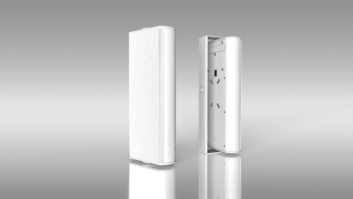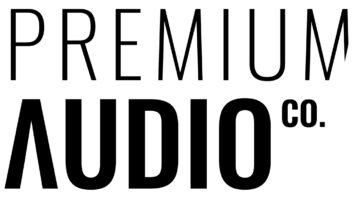As consumer fascination with digital still cameras (DSC) continues to draw demand toward more and better featured models, camera manufacturers have stepped up their emphasis on delivering d-SLR models that appeal to both eager novices and better skilled photographers.
Although these models sit at the higher end of the price-point range, manufacturers said economically stressed photo enthusiasts who have caught the bug still want products that can expand their creative range through the dual option of fully automatic shooting and fully manual shutter and aperture control.
They also want the ability to swap lenses and add more powerful flash accessories, which brings retailers residual profit opportunities well after the camera sale.
According to The NPD Group’s retail tracking service, d-SLR sales went from 7.1 percent to 8.3 percent of all DSC units from Q1 2008 to Q1 2009, and from 29.9 percent to 32.8 percent of dollars.
“We expect to see that figure continue to grow over the next two to three years, hitting double digits in unit share,” said Liz Cutting, NPD imaging analyst and senior account manager. “The d-SLR category, while impacted by the economic downturn, has been one of the most resilient consumer electronics categories, along with LCD TVs and notebook computers.”
Compared to compact digital cameras, which also have a much higher saturation, d-SLRs were up 6.5 percent in units in Q1 2009 while compact DSCs were down by 9.9 percent vs. Q1 2008. While dollars have declined for both segments, d-SLRs were less impacted, at -7.1 percent vs. compact DSC at -19 percent, NPD said.
The dichotomy between consumers wanting to hold onto their money until prosperity returns and consumers yearning for professional-quality digital cameras has directed much of the d-SLR business this year at entry-level and step-up d-SLRs that retail for less than $1,000.
Overall in d-SLRs, the $500-and-under segment grew from 3 percent to 21 percent of all units sold from Q1 2008 to Q1 2009, according to NPD’s Cutting. The $1,500-and-up segment went from 13.4 percent to 8.9 percent.
“While compact sales have been fairly stable, the biggest impact has been a slowdown in d-SLRs above $1,000,” said Ned Bunnell, Pentax Imaging president. “The biggest challenge is determining if adjusting prices or programs will, in fact, stimulate sales when there still is very low consumer confidence and spending at retail.”
“March sales certainly declined on a unit basis after still seeing double-digit growth in January and February,” observed Richard Campbell, Samsung digital imaging director. “The biggest impact has been on the average selling price, and as ASPs continue to decline it certainly has an impact on how people are positioned out there.”
“Obviously, across the industry, sales at the high end have been impacted recently. People will always seek value during difficult times,” said Andy Flagg, Olympus Imaging America product marketing executive director. “We believe that our quality product line-up will continue to appeal to those consumers.”
NPD’s consumer tracking service indicates that the d-SLR buyer continues to be predominately male, older and wealthy.
“We have not seen a shift to lower household incomes or women in the last year — some of that could be due to economic factors,” Cutting said. “But even as prices for d-SLRs have declined significantly in the last year, there was still a gap of $697 between the average price of a compact DSC ($158) and the average price of a d-SLR ($855) in Q1 2009.”
As for where consumers seem to be shopping for d-SLR cameras this year, NPD’s research indicates growth among big box electronics’ stores and e-commerce sites offering bargains and convenience.
“As d-SLRs move more into the domain of mainstream wallets, we’ve seen growth in big box stores such as electronic specialty, and e-commerce has also been growing,” Cutting observed. “Photo specialty stores continue to dominate higher end sales.”
When it comes to ranking the brands by market share leadership, the line starts behind Canon and Nikon, both of which continued their long-running war in recent weeks by introducing highly featured entry-level models.
A growing trend at the entry level this year has been to emphasize the ability to capture high-definition video clips in addition to digital stills.
“The top two brands in the d-SLR market in the first quarter of 2009 did 90 percent of all dollar volume, the same as Q1 2008,” said NPD’s Cutting. “In the sub-$1,000 range, the same brands represented 83 percent of all dollar sales in the first quarter. The d-SLR buyer is quite brand sensitive, [although] we are seeing slightly more diversity in the lower end of the spectrum.”
Manufacturers looking to drive the market into more mainstream audiences are searching for methods that will drive sales today without disrupting the profit potential for the future.
The emergence in recent years of traditional consumer electronics brands including Sony, Samsung and Panasonic in the d-SLR space has intensified competition while putting further pressure on margins. Some brands have lowered pricing in an effort to open up the mass market to d-SLR sales.
“Digital technology always impacts the landscape of traditional markets,” said Pentax’s Bunnell. “Similar to Apple entering the smartphone market, photography also has new entrants outside of the traditional vendor. In the end, this is good for consumers as they have a greater choice. In our case, Pentax still is focusing on our core customer who is a more serious photographer by offering continually more advanced cameras and lenses based on the attitude that our products are designed by photographers for photographers and we truly listen to their needs.”
Meanwhile, Panasonic and Samsung have joined Olympus and others in pursuing a “hybrid digital camera” category that melds the creative advantages of the traditional d-SLR with the ease of use and lower price points of well-featured compact DSCs.
“We have expectations that there is tremendous opportunity for us to grow within this segment,” said Samsung’s Campbell, whose company will launch its first hybrid digital camera model later this year in the NX series. “Ultimately, we expect there will be opportunities to grow within the hybrid area and evolve that to the next level where we can start to compete against and infringe upon some of the market share of the legacy [SLR] brands that exist today.”
Olympus’s Flagg said his company’s strategy this year is to use the opening price point “as a means to transition the consumer up from a compact camera and deliver the promise of enhanced image quality, speed and creativity. We’re confident that we’ve developed a lineup that will have an appealing model for each segment of the market, which includes the opening price point all the way through to the professional.”
To help make up for shrinking margins, the d-SLR category offers retailers a virtual boat load of accessory add-on opportunities.
NPD’s Cutting said zoom lens and d-SLR sales “have historically tracked along well together, and Q1 2008 to 2009 was no exception as they were up 7.5 percent in units and down 8 percent in revenue. Tripods grew single digits in both units and dollars, and filters were up in units but down 7 percent in dollars. External flash revenue was down 10 percent in both units and dollars.”
“Clearly, all goods including accessory purchases have been impacted as consumers have put off buying non-essential items,” said Bunnell. “Pentax has stimulated sales, for example, by packaging the K2000 with a lens and flash, thereby offering the consumer a far better value.”
“The industry needs to do a better job at protecting the margins of accessories for the dealer,” said Olympus’ Flagg. “We’ve recently introduced a new program to do just that. It’s critical for manufacturer and dealer to successfully sell accessories and support the customer’s ability to do more with their cameras.”













